Cruising with Disabilities Advice and Tips
The dis-ABILITY to Cruise: Expert Advice and Tips on cruising for travellers with disabilities
Doug Smith is a cruising expert who also has had Spina Bifida and Hydrocephalus since birth and is a wheelchair user. Using his unique personal perspective and insights he provides advice and tips for travellers with disabilities on how to plan and get the most from a cruise. He runs the site TheDisabilityToCruise.com has written a book called “The dis”ABILITY’ to Cruise”, and has provided this article with some highlights for people concerned if cruising is suitable for them.
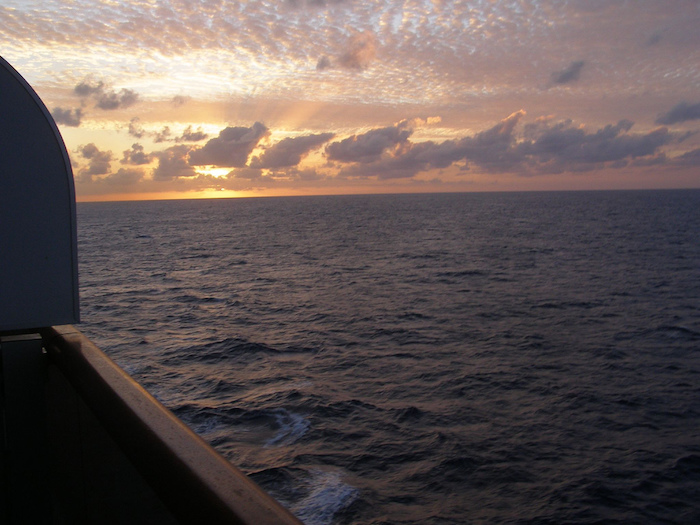
Is it possible for people with disABILITIES to go on cruise holidays? ABSOLUTELY!
Cruise holidays are a fantastic way for people with disABILITIES, as well as their families, friends and/or carers to enjoy a relaxing (or otherwise, depending on how you like to enjoy your holidays).
How do I know? There are three reasons why I can say, hand-on-heart, that cruise holidays are fantastic for people with disabilities:
- I worked in the cruise industry between July 2007 and November 2011 – that was until ill-health took me back from Southampton to Peterhead in the north east of Scotland.
- I have conducted cruise ship tours for travel agents as well as members of the public, some of whom had a disability of one kind or another.
- I have been on a cruise holidays, myself.
You may be asking: “What do you know about disability, and how do you know cruise ships are fully accessible to people with disabilities?”. I am a full-time wheelchair user, having had Spina Bifida and Hydrocephalus since birth.
Cruise holidays are not just accessible to able-bodied people. They are accessible to EVERYBODY!
Getting to the cruise ship
Let me start with getting to your cruise ship. There are many ways you can do this:
- If you live close to the cruise terminal, you may choices. One of which is to take a taxi. There are accessible taxis in many towns and cities, and there is no need for wheelchair users to “transfer” from your wheelchair once you are inside the taxi. You just stay in your wheelchair, and are “fastened” to the floor of the cab using specifically designed clamps or straps.
- You can drive to the terminal, and either be dropped off by relatives/friends right outside the cruise terminal. Or, on specific cruises, you can park your car in a secure car park – for the duration of your cruise holiday – in the knowledge that your car will be looked after by highly trained security staff.
- If you live further away from the cruise terminal, you can always take one of the coaches, with companies contracted to the cruise line. These coaches will pick you up from specific points around the country, take you directly to the cruise terminal, and at the end of your cruise, they will pick you up at the terminal, and take you back to your original point of boarding. These coaches are usually fully wheelchair accessible, and can accommodate a few wheelchair users at a time. Please check with the coach company for availability.
- If you live at the opposite end of the country, or in a different country from where you will be boarding your cruise ship, you can always take your standard schedule or charter flight to get you to the nearest airport, then take a taxi to the terminal.
You will not have to handle your luggage at the cruise terminal
Once you arrive at the terminal your luggage after removed from your car or from the coach is taken care of by the line.
Your luggage will be taken from you, taken into the cruise terminal, scanned through security, boarded on the cruise ship, and the ship’s staff will – on 95% of the time – have your luggage in your cabin, sometimes even before you have boarded the ship. The other 5%? The staff will, hopefully, get your luggage to your cabin before the ship departs.
There are Accessible Cabins, with “Emergency” buttons
Ensure you have booked an accessible cabin. In wheelchair accessible cabins, there is more floor space than in standard cabins of the same grade (for obvious reasons).
In accessible cabins, you will see that many items have been lowered to a more accessible, manageable height for wheelchair/scooter users. This includes items such as:
- Sink and taps
- Toilet seat
- Light switches
- Shaver point
- Shower seat
- Detachable shower head
There are items such as a raised toilet seat, should you find that the height of the toilet is too low to use. This can be requested, either before you travel (preferably), or when you board – Just ask one from your cabin steward.
Also, very importantly, there are a couple of “Emergency” buttons in and around the cabin, one of which is usually within the wheel-in shower room, and the other is situated by the bed in the main part of the cabin.
These buttons are there for when passengers get into some sort of trouble inside your cabin. The buttons are connected directly to the Purser’s Desk (Main Reception Desk), and when pressed, this will alert the staff at the Purser’s Desk you need assistance. Within a couple of minutes, a member of staff will knock on your cabin door, and ask if you are ok, and if you need assistance. NOTE OF CAUTION: These buttons are VERY sensitive, and if knocked accidentally, you will have a member of staff at your door very swiftly indeed. So, please make yourselves aware of their position, and try not to press it inadvertently.
If you book a wheelchair accessible balcony cabin or higher, the balcony will also be fully accessible. There will be a table with one or two chairs, and if you have booked a mini-suite or suite, there may (depending on cruise line and ship), be a recliner on your balcony.
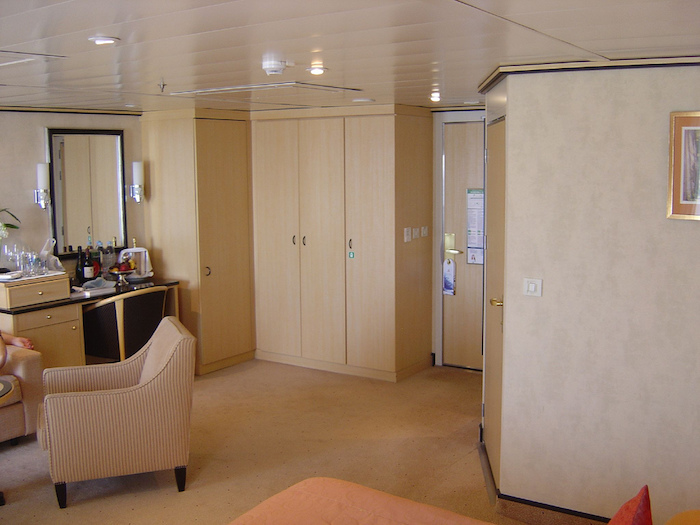
Cunard Queen Mary 2 Wheelchair Access Queens Grill Suite
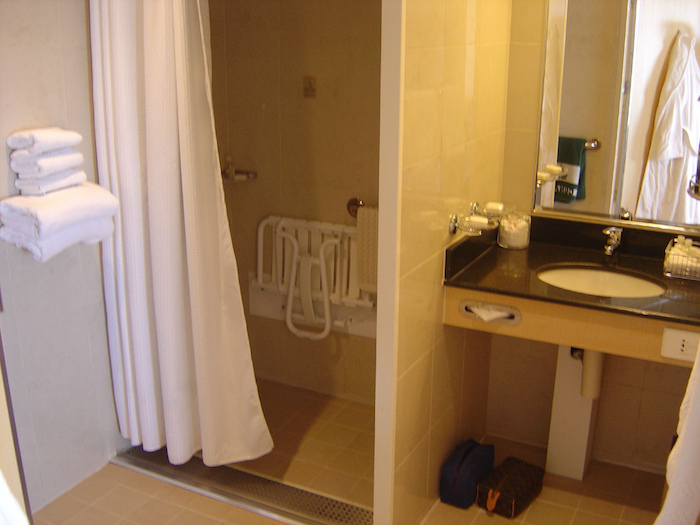
Cunard Queen Mary 2 Wheelchair Access Bathroom Queens Grill Suite
Emergency Evacuation Drill, make sure you let the crew know of your needs
Before your cruise ship departs on your first day, there will be an emergency evacuation drill. After everyone is on board, about one hour before the ship leaves the port, the Captain or First Officer will announce over the tannoy that there is going to be an emergency evacuation drill – which EVERYONE ON BOARD MUST- by International Maritime Law – obey!
If you need assistance, please let a member of staff know, and they will aid you down the stairwell and on to your Muster Point. You see, lifts/elevators must NOT be used during either an evacuation drill, or for that matter, a real evacuation. Hence, they will be out of use.
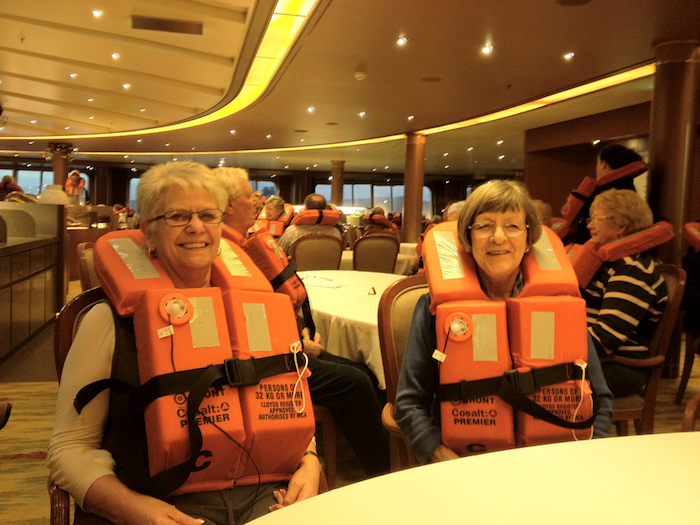
Emergency Drill – Lifejackets
Be aware of potential limits on going ashore at ports of call
Going ashore at the different ports of call, and exploring the different ports and surrounding areas during your cruise holiday, is really why you want to go on a cruise holiday… just like you were going to, say, Benidorm you wouldn’t stay in your hotel room for the duration of your holiday, you would get out and explore the area. This is exactly the same on a cruise holiday, only, you have more than one port or country to explore. How you get there, depends on whether the ship as berthed along the quayside, or at anchor.
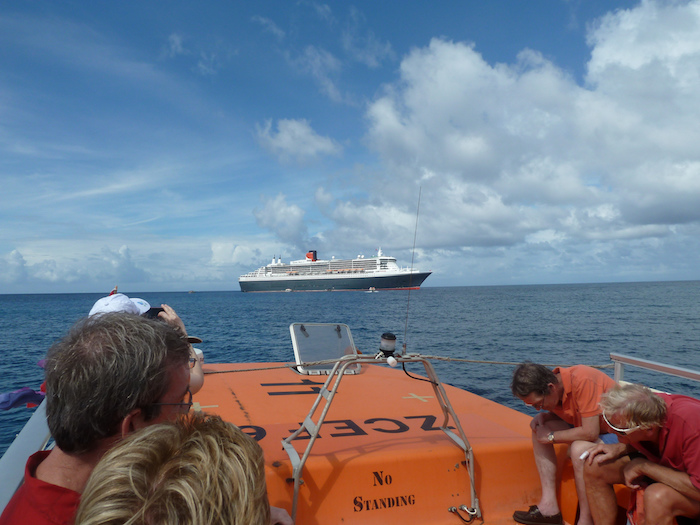
Queen Mary 2 Tendering St Lucia
Tendering issues
If a ship is too long, or has a draft (the depth of ship under the water line), to berth alongside the quayside, then the ship will have to weigh anchor. This means that the ship will have to drop its anchor offshore, and passengers will be brought ashore by tender (the ship’s lifeboats).
If the port has easy access from the water, then people with disabilities will be allowed to go ashore on the tender craft. However, if the Captain deems the access to the shore (there are steps which are either too steep or too narrow for a wheelchair), to be too dangerous for passengers and crew, then, unfortunately, you will be prohibited from going ashore at that port of call. This is why it is VERY IMPORTANT that you do your homework BEFORE you book your cruise, so that you are not disappointed when you get to that specific port of call. The Captain of the ship will have the final say on whether you can, or cannot, go ashore.
If there are steep steps to get from the tender craft to main street level, and you slip or fall and injure yourself, or if one of the staff members gets hurt, the Captain will have full responsibility, and he/she will be liable for any damages. So, as you can see, it is very important to understand, respect and adhere to the Captain’s decision. I know it may come as a disappointment to you, should you not be allowed to go ashore, but the Captain is only looking out for the health and safety of you, your fellow passengers, and his crew.
Dockside issues
Also, as with the ship being at anchor, if the ship is berthed alongside, there may be a time when the Captain will refrain you from going ashore. This will be if the gangway is at too steep an angle due to high or low tide. Please do not get me wrong here. The ship’s staff will attempt to get you ashore – if possible – but if there is any sign that this could cause injury, either to you, or a member of crew, then again, you will not be allowed to go ashore. The last thing that the Captain, his crew and the cruise line want, is for you to be held “prisoner” on board the ship, but, as I have said before, they are only looking out for your health and safety.
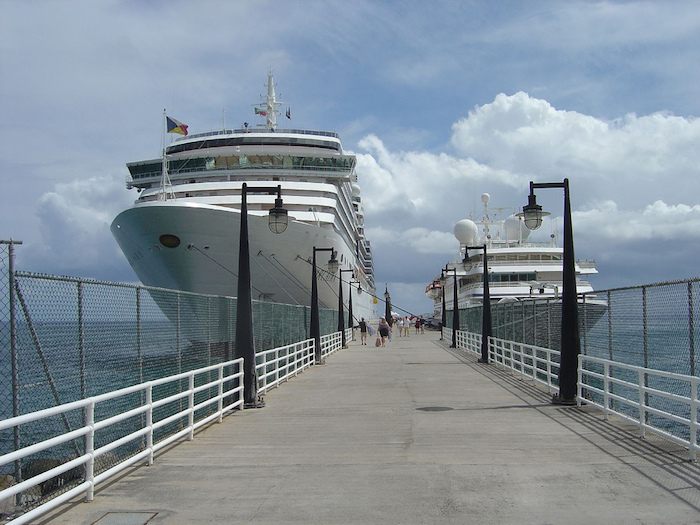
Shore Excursions
Should you wish to take one of the ship’s organised shore excursions, and you cannot board the coach to take you on that excursion, you can advise the staff at the Purser’s Desk, and they can organise accessible transport to get you on the excursion. Please remember to do this on the evening before you arrive in port.
Disembarkation from the ship
Before you go out for your last evening meal and evening’s entertainment, you will have to pack your bags and suitcases, make sure they all have tags on them, and leave them outside your cabin door. This means you do not have to worry about handling your baggage off the ship.
Should you need anything clarified, please go to my website: http://www.thedisabilitytocruise.com. Here, I give you all of the information you need, along with the opportunity to buy my book called “The disABILITY To Cruise?”. In it, I give a full rundown of all the information you need to decide whether a cruise holiday is right for you. I certainly think it is. In fact, I KNOW it is!
“What are you waiting for? Go on, get out there! Book a cruise! See the world… or at least part of it! After all, it is YOUR world!”
If you have any thoughts, advice and tips please add them in the comments section below this article.

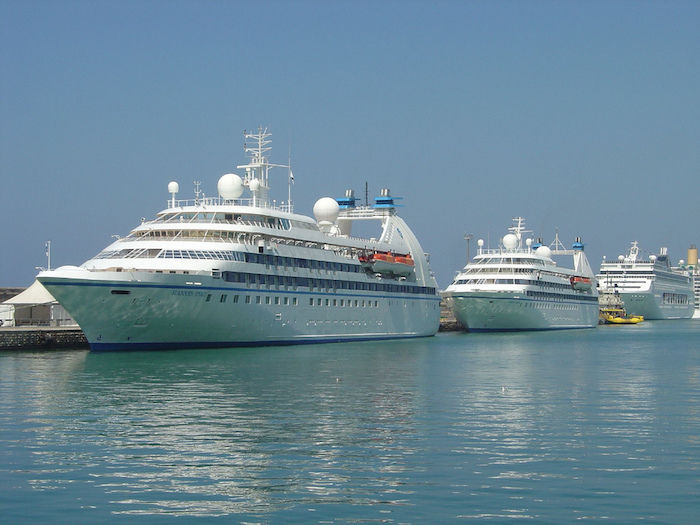


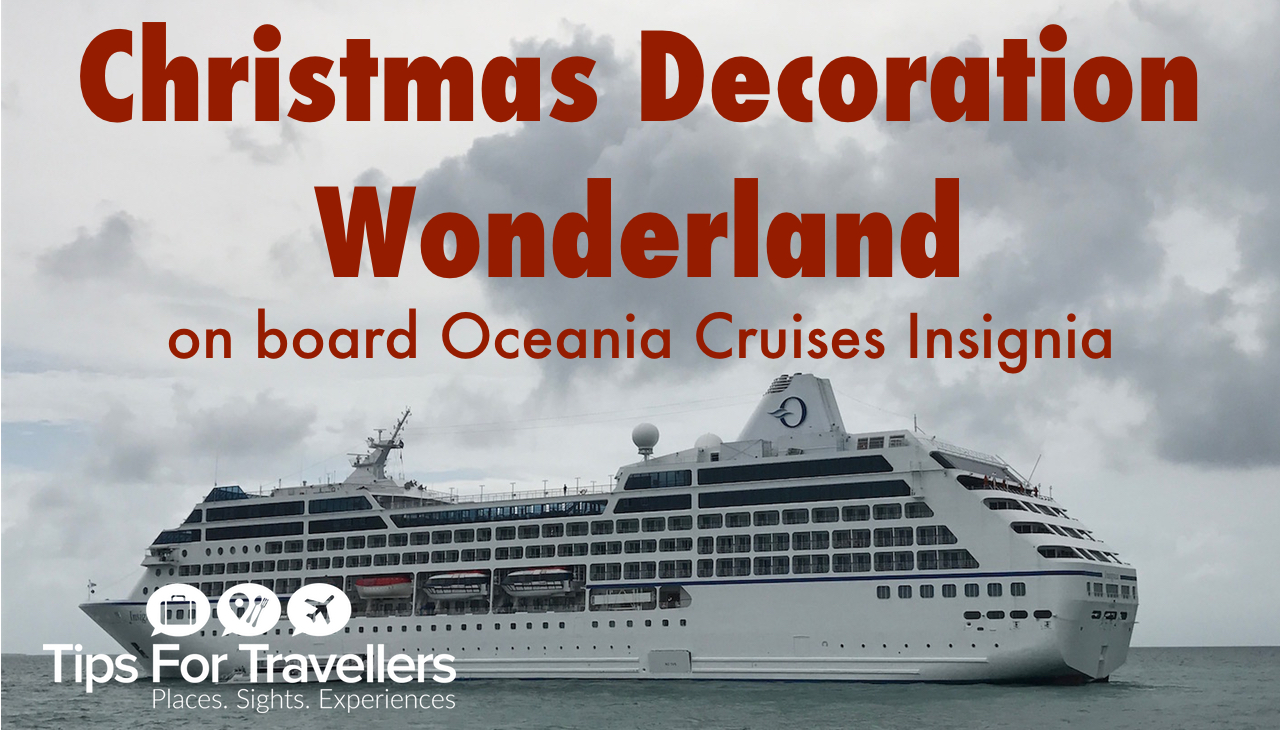










Very encouraging article on disability access. I live in East Texas and would love to find something accessible and affordable for our 43rd anniversary this October. I have been in the hospital my last three anniversaries and would love to make it up to my wife I really don’t care where we go preferably out of Galveston maybe three nights and we do not have passports yet taking all this into consideration would appreciate any help you can provide God bless